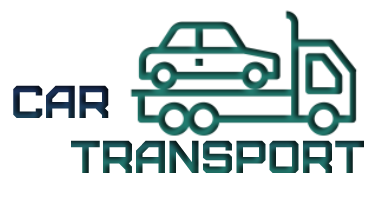The global automotive space is a well-oiled machine, with a vast network of manufacturers, suppliers, and distributors working in tandem to deliver new cars to eager customers. Transportation plays a crucial role in this intricate supply chain, ensuring that vehicles reach their destinations efficiently and cost-effectively. This article goes into the comprehensive overview of the different methods used to transport new cars to dealerships, highlighting the advantages and disadvantages of each approach New Cars Are Transported To Dealerships.
Modes of Transportation
The transportation of new cars to dealerships is a critical aspect of the automotive supply chain, ensuring that automobiles reach their destinations efficiently and cost-effectively. Truck transport is the most common mode for short- to medium-distance deliveries, while rail transport is preferred for long-distance routes.
Ocean transport is the most economical option for international shipments, while air transport is reserved for high-value or time-sensitive vehicles. Each mode of transport presents unique pros and cons, and the choice falls on factors such as distance, vehicle type, and urgency.
| Mode of Transport | Advantages | Disadvantages |
| Truck | Cost-effective, door-to-door delivery, suitable for various vehicle types | Limited capacity, potential for damage, traffic congestion |
| Rail | High capacity, fuel-efficient, reduced emissions, long-distance routes | Specialized facilities, limited flexibility, weather delays |
| Ocean | Cost-effective, high capacity, international shipments | Long transit times, specialized ports, weather vulnerability |
| Air | Fastest option, urgent deliveries, weather-resistant | High cost, limited capacity, specialized aircraft |
New Cars Are Transported To Dealerships
- Truck Transport:
- Description: Trucks are the most common mode of transportation for new cars, offering flexibility and efficiency for short- to medium-distance deliveries.
- Advantages: Cost-effective for shorter distances, door-to-door delivery, suitable for various vehicle types.
- Disadvantages: Limited capacity, potential for damage during loading and unloading, traffic congestion can impact delivery times.
- Rail Transport:
- Description: Rail transport is a cost-effective and environmentally friendly option for long-distance deliveries, especially for large volumes of vehicles.
- Advantages: High capacity, fuel-efficient, reduced emissions, suitable for long-distance routes.
- Disadvantages: Requires specialized loading and unloading facilities, limited flexibility for door-to-door delivery, potential for delays due to weather or infrastructure issues.
- Ocean Transport:
- Description: Ocean transport is the most economical option for transporting large volumes of vehicles over long distances, particularly for international deliveries.
- Advantages: Cost-effective for long distances, high capacity, suitable for international shipments.
- Disadvantages: Lengthy transit times, requires specialized port facilities, potential for damage during loading and unloading, vulnerable to weather conditions. Car Shipping Companies
- Air Transport:
- Description: Air transport is the fastest but most expensive option, typically reserved for high-value or time-sensitive vehicles.
- Advantages: Fastest delivery option, suitable for urgent deliveries, less susceptible to weather or traffic delays.
- Disadvantages: High cost, limited capacity, requires specialized aircraft and airport facilities, not suitable for all vehicle types.
Challenges in New Car Transportation
- Damage Prevention: Protecting vehicles from damage during transport is a top priority. Specialized carriers and careful handling procedures are essential to minimize the risk of damages such scratches, dents, or dings.
- Cost Optimization: Balancing cost-effectiveness with delivery speed and efficiency is a constant challenge. Transportation providers must carefully consider factors such as distance, vehicle type, and urgency to determine the most economical mode of transport.
- Environmental Impact: Reducing the environmental footprint of new car transportation is an increasing concern. Utilizing fuel-efficient modes of transport, optimizing routes, and exploring alternative fuel sources are crucial steps towards sustainability.
- Infrastructure Limitations: The availability of suitable infrastructure, such as specialized loading facilities and efficient transportation networks, can impact the efficiency and cost of car deliveries.
Industry Insights – New Cars Are Transported To Dealerships
- Technological Advancements: The automotive industry is constantly exploring new technologies in order to improve the efficiency and sustainability of new car transportation. GPS tracking, real-time monitoring, and route optimization software are transforming the way vehicles are transported.
- Collaboration and Partnerships: Collaboration between manufacturers, carriers, and dealerships is essential for streamlining the transportation process and ensuring timely deliveries. Strategic partnerships can optimize costs, improve communication, and enhance overall efficiency.
- Customer Expectations: Customer expectations for fast and reliable delivery are increasing. Transportation providers are adapting their services to meet these demands, offering faster transit times, real-time tracking, and flexible delivery options.
- Sustainability Focus: The automotive industry is placing a growing emphasis on sustainability. Electric vehicles, hybrid cars, and alternative fuel sources are becoming more prevalent, impacting transportation methods and infrastructure requirements.
Parting Words
The transportation of new cars to dealerships is a complex and multifaceted process that involves a careful consideration of various factors. By understanding the different modes of transport, the challenges involved, and the industry insights shaping this process. We can appreciate the intricate logistics behind delivering new cars to eager customers worldwide.
As the automotive industry keeps evolving, we can expect to see further advancements in transportation technology, sustainability initiatives. And customer-centric solutions that will redefine the way new cars are delivered to dealerships.
